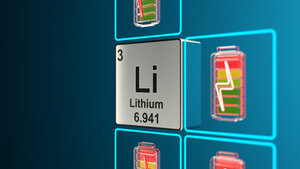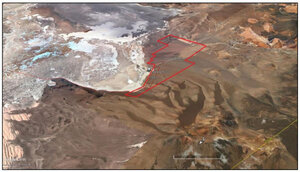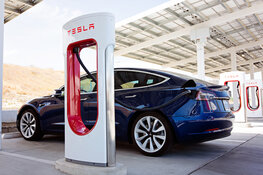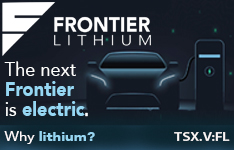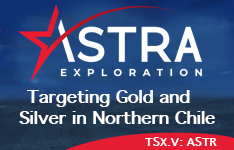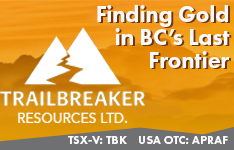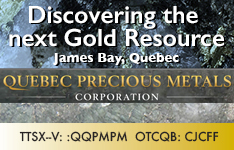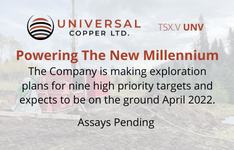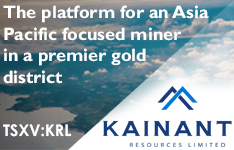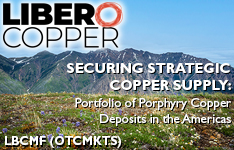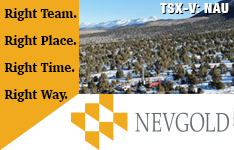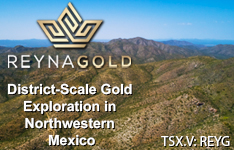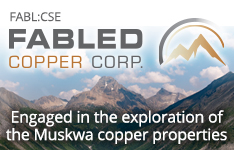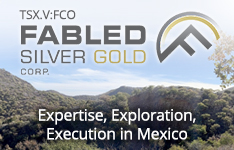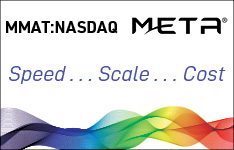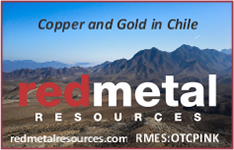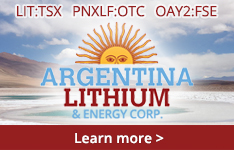An April 12, 2022 report from American consulting firm McKinsey & Company says lithium carbonate equivalent demand could reach 4 million tonnes in 2030, up from about 500,000 tonnes in 2021 — a 300% increase.
In the near term, the average price for a metric tonne of lithium carbonate is expected to surpass $60,000 in 2022, an almost 50% increase from the $42,000/tonne it fetched in 2021.
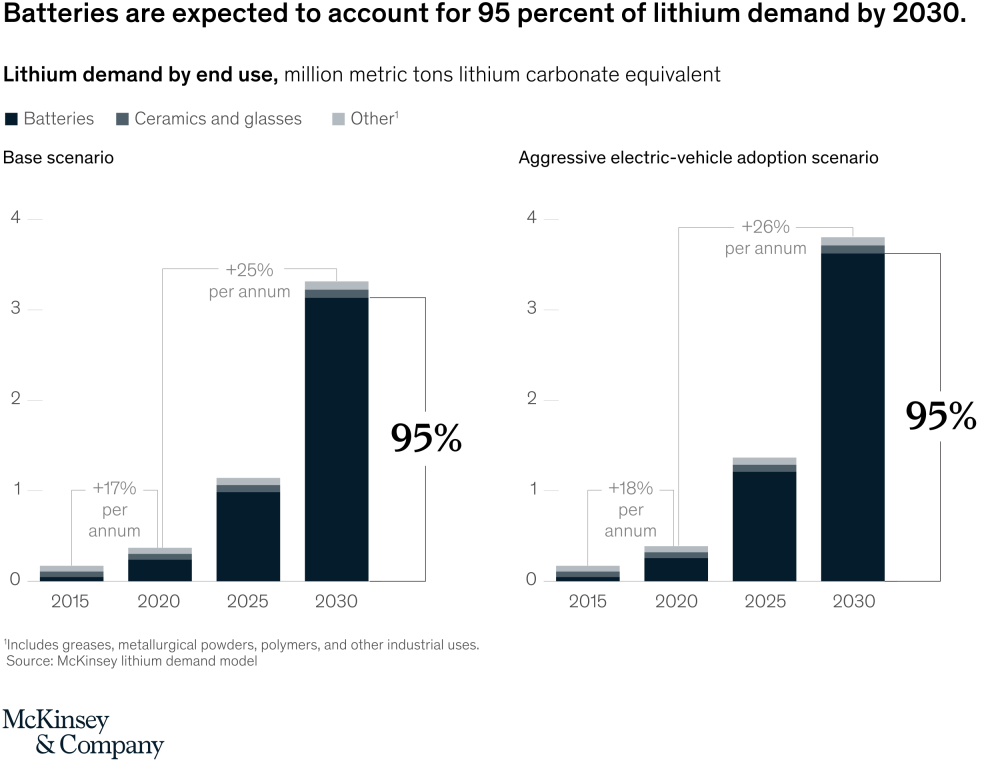 Meanwhile, the McKinsey & Co. report says battery-grade lithium hydroxide prices in March hit $65,000/tonne, versus an average of $14,500/tonne over the previous five years (both lithium carbonate and lithium hydroxide can be used to make batteries, though lithium carbonate requires additional processing).
Meanwhile, the McKinsey & Co. report says battery-grade lithium hydroxide prices in March hit $65,000/tonne, versus an average of $14,500/tonne over the previous five years (both lithium carbonate and lithium hydroxide can be used to make batteries, though lithium carbonate requires additional processing).
Prices are so high that lithium is now being called by another name: White Gold, given its light greyish color.
Driving these unprecedented lithium prices is the surge in demand for electric vehicles (EVs), as well as smartphones, laptops, and tools — all of which use lithium-based chemistry in their batteries.
A typical battery in an EV can use as much as 20 lb lithium. Tesla Inc. (TSLA:NASDAQ), the world’s largest EV maker by market cap, produced slightly more than 936,000 cars in 2021— and it’s one of dozens of EV manufacturers.
Even in the COVID-ravaged economy of 2020, EV sales increased by 50% and then doubled in 2021 to nearly 7 million units worldwide.
It’s largely about two things: high oil prices and the race to “net zero” or carbon neutral as countries the world over attempt to lower their respective carbon footprints by subsidizing the cost of EVs and mandating an end to internal combustion engines — a considerable source of high-carbon greenhouse gases — sometime in the next 15 to 30 years.
Sourcing lithium to meet the demand has even the biggest companies acquiring assets.
Tesla CEO Elon Musk recently mused about acquiring a lithium mine given the unpredictable prices for battery-grade lithium — the linchpin in his electric car manufacturing empire.
While London-based monolith Rio Tinto Plc (RIO:NYSE; RIO:ASX; RIO:LSE; RTPPF:OTCPK), typically a purveyor of large-scale industrial metals like copper and aluminum, entered the lithium business in December 2021 when it reached a deal to buy Rincon Mining from private equity firm Sentient Equity Partners for $825 million ($825M). Rincon is developing a lithium brine project in Argentina.
The deal was preceded in October 2021 by China’s Zijin Mining Group Co. Ltd. buying Canadian junior Neo Lithium Corp. for about $737M. The deal was subject to a review but ultimately the Canadian government approved the sale in January.
It wasn’t the last time that a Chinese firm would take a run at a Canadian lithium asset.
In January, Contemporary Amperex Technology Co. Ltd., a battery maker based in China, attempted to buy Vancouver-based Millennial Lithium Corp. for $302M only to see its bid topped by Lithium Americas Corp. (LAC:TSX; LAC:NYSE) with a $400M cash and share offer.
After making its superior bid, Lithium Americas CEO Jon Evans told Reuters: "This transaction is a lower regulatory risk than (Contemporary Amperex Technology) or another Chinese company. Like it or not, there's critical mineral strategies by the U.S., Canadian and Australian governments that could have played a part in this."
Further consolidation in the lithium mining space is expected as surging prices make the economics of mining lithium extremely attractive relative to many other commodities.
Investors can follow the world’s biggest lithium players via the Solactive Global Lithium Index, which consists of the 40 largest lithium mining and exploration companies, as well as battery and car manufacturers.
Here are five ideas to gain exposure to lithium.
Frontier Lithium Inc.
Frontier Lithium Inc. (FL:TSX.V; LITOF:OTCQX; HL2:FRA) is developing its 100%-owned PAK lithium project near Red Lake, in northwestern Ontario. Earlier this year the junior explorer published a preliminary economic assessment (PEA) that looked at the economics of bulk mining lithium from spodumene mineralization in pegmatites at its PAK and Spark lithium deposits that comprise the PAK project.
Lithium would be extracted, concentrated, and refined into lithium-hydroxide at an on-site plant.
The economic study said that the project would generate $8.5B over 26 years and pegged PAK’s pre-tax net present value (NPV) at $1.62B, using an 8% discount rate (the post-tax value was calculated at just less than $1B).
It would generate an internal rate of return (IRR) of 27% and an average annual EBITDA of $225M.
The cost to build the mine would be almost $700M, which factors in $117M in sustaining capital.
Over 24 years, the chemical plant would produce of 556,200 tonnes (556.2 Kt) of battery-quality lithium hydroxide-monohydrate (LiOH-H2O) — or slightly more than 23 Kt annually. The study estimates the LiOH-H2O would fetch an average of $13,500 per tonne, at all-in operating cash costs of $4,083 per tonne.
The next step in de-risking PAK is to advance the project to the prefeasibility stage.
The company is currently drilling PAK and testing lithium hydroxide production at a pilot plant.
Why Frontier Lithium?
- North American-based lithium suppliers are few, and Frontier has outlined sizeable resource with a clear path to development, and ultimately, production. Detroit has been the heart of automobile manufacturing in the U.S. for more than a century, and several lithium-ion battery and electric vehicle makers have set up shop in and around the Motor City.
Having a North American-based lithium supplier within trucking distance would make economic sense. - It’s one of North America’s highest-grade hard rock lithium resources. And spodumene is a fairly low-cost source of lithium hydroxide.
Market Cap: CA$685M
Shares outstanding (approx.): 210M
Insider/Management Ownership: 25%
Institutional Ownership: 9% [Source: company presentation]
Argentina Lithium & Energy Corp.
Argentina Lithium & Energy Corp. (LIT:TSX; PNXLF:OTC; OAY3:FSE), a company under the Vancouver-based Grosso Group umbrella, is exploring four lithium projects — Antofalla North, Incahuasi, Pocitos, and Rincon West — in the “Lithium Triangle,” an area of lithium-rich salars or salt flats that straddle the borders of Argentina, Chile, and Bolivia.
The Lithium Triangle currently hosts more than half of the world’s known lithium reserves.
The junior lithium play is following the Grosso Group playbook to a T: Start by securing a district-scale land position. Then bring in people with a thorough understanding of the sought-after commodity and geology. Use the latest technology to systemically explore the land package until a discovery is made. Drill and de-risk that discovery until it becomes attractive to a larger player.
Argentina Lithium has secured 67,000 hectares over its four lithium properties and hired Miles Rideout as vice-president, exploration. He was previously with Lithium Energi Exploration and spent more than 20 years with Canadian geophysics firm Quantec Geoscience — the same company that Argentina Lithium hired to conduct 36.4 line-kilometers of Transient Electromagnetic (TEM) soundings surveys at Rincon West.
The surveys provide electrical resistivity data that can detect and outline conductive underground structures that might be related to lithium brines.
Rincon West covers 2,470 hectares in the salar basin, west of Rio Tinto Plc’s Rincon lithium project.
Rideout says the TEM surveys suggest that interpreted brine aquifers extend substantially further west and south than what had been indicated in earlier surveys.
Drilling is expected to begin later in May on targets outlined by the TEM survey.
The company also recently expanded its land position at the Antofalla property.
Why Argentina Lithium?
- No one has as many ties to Argentinian exploration success stories as the Grosso Group. Through several different companies, the group has made four world-class discoveries in Argentina — Navidad, a massive undeveloped silver play; the Gualcamayo gold mine; the Chinchillas silver-lead-zinc mine; and the Amarillo Grande uranium-vanadium deposit.
- Lithium projects in Argentina keep attracting takeover bids. In October 2021, Zijin mining made an all-cash bid for Neo Lithium (as mentioned earlier) valued at $737M. Neo is developing the feasibility-stage Tres Quebradas (3Q) Project in Catamarca, Argentina's largest lithium-producing province. And in late March, Rio Tinto wrapped up its acquisition of Rincon Mining (initially announced in late 2021) and its Rincon lithium brine project in Argentina. Rincon was owned by private equity group Sentient Equity Partners, which let Rincon go for a cool $825M. Rincon’s brine project is essentially beside Argentina Lithium’s Rincon West lithium property.
Market Cap: CA$24M
Shares outstanding (approx.): 97.6M (fully diluted)
Insider/Management Ownership: 30%
Institutional Ownership: Minimal, mostly held by retail investors at this stage [Source: company management]
Patriot Battery Metals Inc.
Vancouver-based Patriot Battery Metals Inc. (PMET:CNX) is in the early stages of exploring a 213 sq. kilometer land package in Québec’s James Bay lowlands.
Samples taken by Patriot from spodumene pegmatites in the area returned grades greater than 1% lithium oxide.
Patriot recently wrapped up the winter/spring 2022 drill campaign at its wholly owned Corvette lithium property. The junior drilled 4,350 meters over 20 holes. Of those, three were drilled on land, while the other 17 were drilled from drill pads on ice.
Core samples have been sent to geological firm SGS Lakefield for assaying, and the first results should be known in the coming weeks.
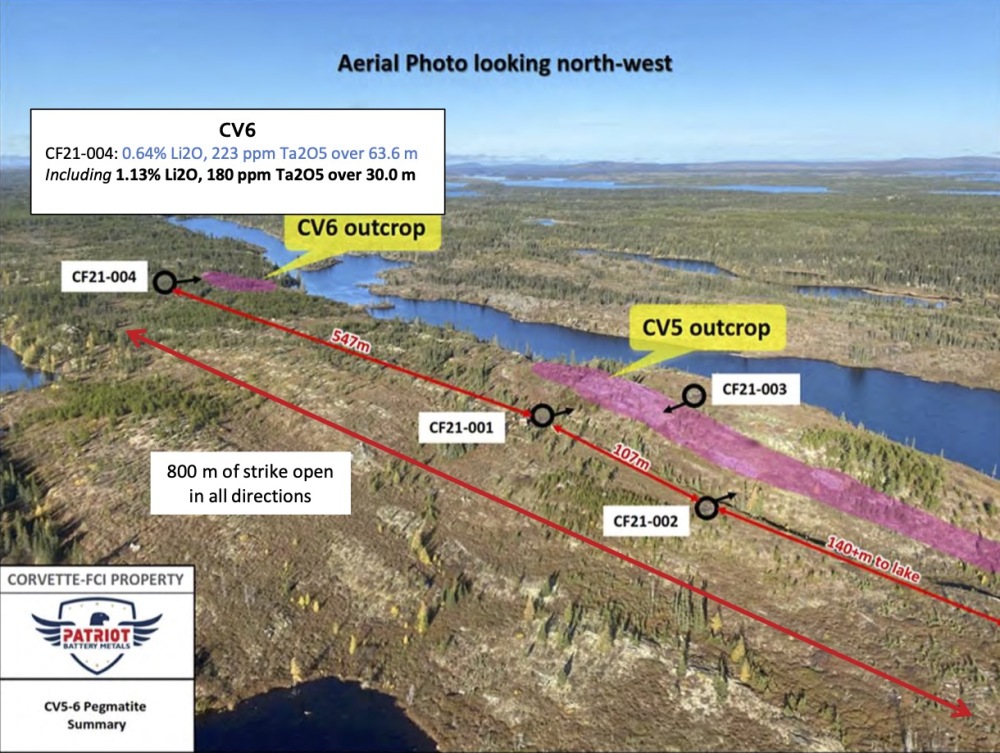
Based on drill holes and other work done to date, the company’s 3D model suggests that pegmatite continues across a small lake on the property from pegmatite CV5 toward pegmatite CV1 — a strike length of about 1,400 meters. The same model indicates that the pegmatite thickens at depth.
The target drill area — what Patriot is calling the CV Lithium Trend — is roughly 13 km from the all-weather Trans-Taiga Road and the Hydro-Québec power grid.
Much of far northern Québec has competent roads and other infrastructure due to the network of hydroelectric dams that provide electricity to the province and several U.S. states along Québec’s southern border.
Why Patriot Battery Metals?
- Nearby access to renewable energy could prove to be a considerable advantage if the junior ever drills off enough lithium to make Corvette economic.
- Two drill rigs remain on site at Corvette and will be used to execute the fully-funded summer/fall drill program. The junior has raised an impressive $13 million for exploration and other expenses.
Market Cap: CA$119M
Shares outstanding (approx.): 82.3M
Insider/Management Ownership: CFO and Director Dusan Berka, 380,000 shares (0.47%); CEO, President and Director Blair Way, 250,000 shares (0.3%); Director John Evensen, 200,000 shares (0.24%) [Source: Reuters, May 13, 2022]
Institutional Ownership: n/a
Lake Resources N.L.
Lake Resources N.L. (OTC:LLKKF), a lithium developer based in Australia, boasts one development-stage project and three more exploration-stage projects in the Lithium Triangle — only these projects are all in Chile, not Argentina.
In 2020, the junior published a prefeasibility study (PFS) on the Kachi lithium project in southern Chile and updated it in March 2021 to reflect markedly higher prices for lithium carbonate.
Lake plans to produce lithium carbonate at Kachi by 2024.
The PFS pegs development costs at $544M but roughly 70% of the necessary funding for Kachi is already in place through low-interest debt financing that is subject to a positive definitive feasibility (slated for later this year), a favorable environmental and social impact assessment, and an offtake agreement.
The refreshed study calculated Kachi’s NPV at $1.58B in an operation producing 25,500 tonnes lithium carbonate annually for 25 years (a definitive feasibility study will examine pushing annual production to 50,000 tonnes annually).
The IRR would be 35%, with annual operating cashflow (EBITDA) of $260M.
The junior’s hook is having what it says is will be the highest purity lithium in the world via Lilac Solutions Inc.’s ion-exchange lithium extraction process, which produces 99.97% pure lithium.
The process uses ion-exchange tanks or modules versus dozens of evaporation ponds that can sometimes form a pond chain that stretches for kilometers. Eliminating these ponds ultimately means a smaller development footprint and more sustainable lithium production.
The main agent in Lilac’s process is water and relatively small amounts of it. The company developed its processing technology with help from a Bill Gates-led sustainability fund.
A Lilac pilot plant is currently en route to Kachi to test lithium recoveries from bulk samples.
Lake has two non-binding memos of understanding for up to 25,000 tonnes lithium carbonate (or hydroxide) annually for 10 years with both American carmaker Ford and Japanese trading company, Hanwa. Neither company has demonstrated its commitment to Lake with an equity position but Lake management says Hanwa is “considering a meaningful investment.”
The junior is also in the early stages of development at its Cauchari, Olaroz and Paso lithium projects farther north in the Lithium Triangle.
Lake aims to produce 100,000 tonnes annually of different lithium products by 2030.
Why Lake Resources
- Lake is getting support from some of the biggest players in the lithium space due to Kachi’s low-carbon footprint and attempts to make the project have as little environmental impact as possible.
- This is an advanced-stage project that has undergone multiple economic studies. It might have the least risk of any company on this list.
Market Cap: $1.268B
Shares outstanding (approx.): 1.226B
Insider/Management Ownership: Managing Director Stephen Promnitz, 10.21 million shares (0.77%)
Institutional Ownership: Acuity Capital Investment Management, 40 million shares (about 3%); The Vanguard Group, Inc. 30.19 million shares (2.28%); Fidelity International 12.32 million shares (0.93%) [Source: Reuters, May 13, 2022)
Usha Resources Ltd.
Usha Resources Ltd. (USHA:TSX.V; USHAF:OTCQB) is in the early stages of de-risking the recently acquired Jackpot Lake lithium project in Moapa Valley, Nevada, about 35 kilometers northeast of Las Vegas.
The project is comprised of 140 claims on 2,800 acres.
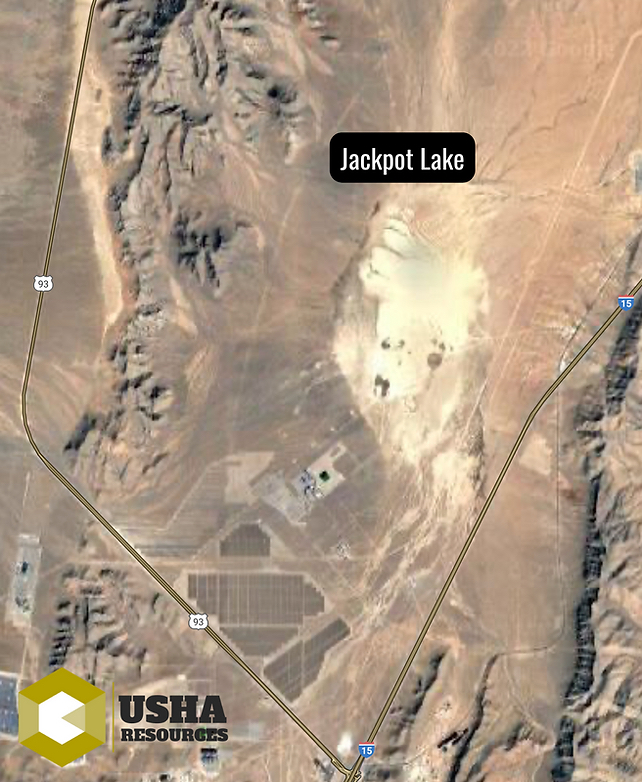
Nevada hosts the only lithium mine in the U.S. — Albemarle Corp.'s (ALB:NYSE) Silver Peak, a lithium brine operation that has been in production continuously since 1966. The producer announced early last year that it plans to expand capacity at Silver Peak by spending as much as $50M on improvements.
Following the Silver Peak discovery, in the mid-1970s the U.S. Geological Survey analyzed 135 stream sediment samples that further confirmed the potential for lithium mineral deposits in Nevada.
Usha management says a drill program consisting of shallow and deep holes should allow the junior to publish an initial National Instrument 43-101-compliant lithium resource estimate by Q4/22.
Jackpot Lake appears to be in a similar geological setting to Silver Peak and Iconic Minerals Ltd.'s (ICM:TSX.V) Bonnie Claire project, which has already undergone a preliminary economic assessment that indicates a 40-year mine life with an after-tax net present value of $1.5B (using an 8% discount rate).
Usha has $1.5M to fund exploration in 2022.
Why Usha Resources?
- Currently most of the lithium used in U.S.-based manufacturing is imported from other countries. So If Usha were to define an economic lithium deposit in Nevada — probably the most mining friendly state in the country — it’s sure to find the support necessary to bring Jackpot Lake to production.
- Relative to its peers, Usha has a small share float and has yet to receive much value for its Jackpot Lake property. A bump in the share price could follow some meaningful drill results from the upcoming program, especially given the feverish rise in prices for lithium carbonate.
Market Cap: $5.43M
Shares outstanding (approx.): 25.6M
Insider/Management Ownership: 20%; CEO and Director Deepak Varshney owns 1.57 million shares or about 6%; Director Navin Varshney owns 2.314 million shares (8.8%).
Institutional Ownership: n/a
Want to be the first to know about interesting Cobalt / Lithium / Manganese investment ideas? Sign up to receive the FREE Streetwise Reports' newsletter.
Subscribe
Disclosures
1) Brian Sylvester compiled this article for Streetwise Reports LLC and provides services to Streetwise Reports as an independent contractor. He or members of his household own securities of the following companies mentioned in the article: None. He and members of his household are paid by the following companies mentioned in this article: None. His company has a financial relationship with the following companies referred to in this article: None.
2) The following companies mentioned in this article are billboard sponsors of Streetwise Reports: Argentina Lithium & Energy Corp., and Frontier Lithium Inc. Click here for important disclosures about sponsor fees. As of the date of this article, an affiliate of Streetwise Reports has a consulting relationship with Usha Resources Ltd. Please click here for more information. The information provided above is for informational purposes only and is not a recommendation to buy or sell any security.
3) The article does not constitute investment advice. Each reader is encouraged to consult with his or her individual financial professional and any action a reader takes as a result of information presented here is his or her own responsibility. By opening this page, each reader accepts and agrees to Streetwise Reports' terms of use and full legal disclaimer. This article is not a solicitation for investment. Streetwise Reports does not render general or specific investment advice and the information on Streetwise Reports should not be considered a recommendation to buy or sell any security. Streetwise Reports does not endorse or recommend the business, products, services or securities of any company mentioned on Streetwise Reports.
4) From time to time, Streetwise Reports LLC and its directors, officers, employees or members of their families, as well as persons interviewed for articles and interviews on the site, may have a long or short position in securities mentioned. Directors, officers, employees or members of their immediate families are prohibited from making purchases and/or sales of those securities in the open market or otherwise from the time of the decision to publish an article until three business days after the publication of the article. The foregoing prohibition does not apply to articles that in substance only restate previously published company releases. As of the date of this article, officers and/or employees of Streetwise Reports LLC (including members of their household) own securities of Argentina Lithium & Energy Corp., Frontier Lithium Inc., and Usha Resources Ltd., companies mentioned in this article.



